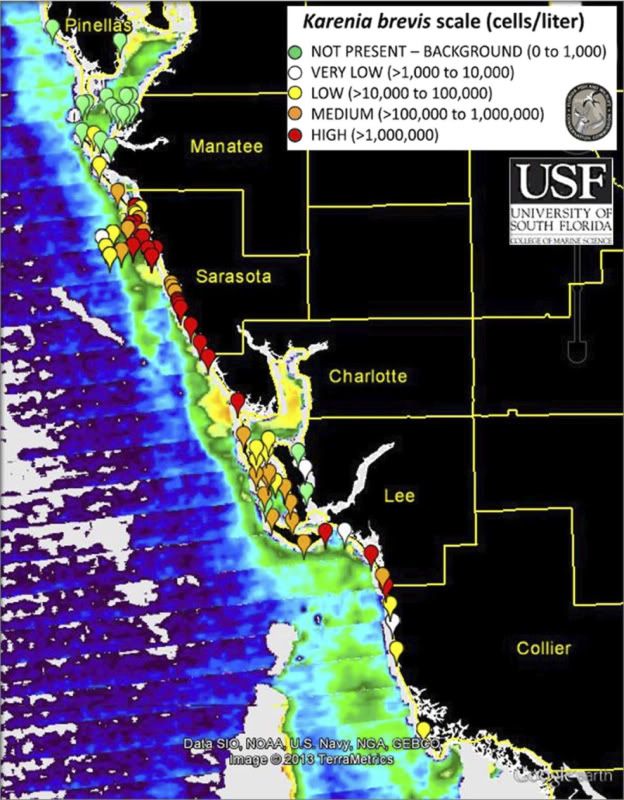The day arrived, I strapped the WindSUP 11'8" to the roof-rack, and headed down to Wiggins Pass State Park. At the entrance they had a little note posted- "Red Tide: Dead Fish on Beach." They were still letting people into the park, though, so I figured it couldn't be too bad.
The water didn't look red to me, but I did notice an awesome (by Gulf Coast standards) swell peeling along the sandbar. The too-good-to-be-true forecast was really happening! I opted to paddle rather than sail the WindSUP because the wind was ultra light and offshore.
Out in the break there were a few dead mullet floating around- not the most encouraging sign. The single-celled dinoflagellate alga that causes most red tides in Florida, Karenia brevis, contains a neurotoxin that poisons the fish when they ingest it. The poison can also be released into the water when the algal cells die, and waves or wind can froth the poison into the air. The airborne toxins can cause coughing, sore throat, burning eyes, congestion, and asthma-like symptoms in people.
There was one other SUP guy out there who seemed to be doing alright, so I didn't worry. The waves were FUN, and I finally felt like I was using the WindSUP to it's full potential. It caught the waves easily, went down the line with speed and stability, and even turned if I told it to. In the video it looks like I'm riding barely-there waves, but they were actually about waist high on average.
SUP Session in Smooth Waves at Wiggins Pass from James Douglass on Vimeo.
Unfortunately, I didn't completely escape the effects of the red tide. It made me cough and feel congested- like mild asthma and hayfever. When I got home I had a headache and a sore throat that hasn't gone away. I had been hoping to get out on the water some more this weekend but unless the red tide condition changes I don't think I should. Checking the Florida Fish and Wildlife Conservation Commission's Red Tide Website was disheartening, as it showed the toxic algal bloom currently covering most of the SW coast of Florida.

Apparently, blooms have been known to last as long as a YEAR. Ugh.
